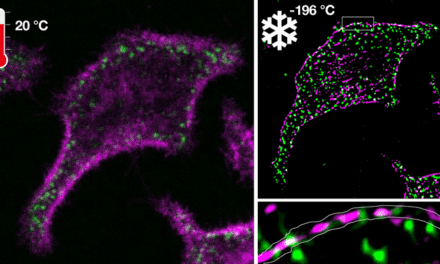Scientists have developed a laser scanning confocal microscope that can harness Circularly Polarised Light (CPL) to differentiate left and right-handed molecules, also known as chiral molecules.
The CPL Laser Scanning Confocal Microscope (CPL-LSCM)—created by scientists from Durham University’s Chemistry Department—can track emissive chiral molecules within live cells and distinguish left-handed molecules from right-handed molecules that can emit bright light.
Luminescent chiral molecules encode a unique optical fingerprint when emitting CPL that contains information about the molecular environment, conformation, and binding state. This information along with previously uncharted parts of biology and chemistry can be accessed and analyzed using the novel microscope.
Full result of the study has been published in the journal Nature Communications.
The researchers also demonstrated that CPL-active probes can be activated using biologically favored low energy two-photon excitation that allows imaging of living tissues up to one millimeter in thickness, with complete CPL spectrum recovery.
Tracking of chiral molecules within live cells permits researchers to study the fundamental interactions between cell, organelles, drugs or introduced chiral molecular probes.
“This is a significant milestone both in optical microscopy and circularly polarised luminescence research, and we hope that it will be adapted and used by many researchers world-wide to venture into the uncharted and study fundamental biological processes in a new ‘chiral’ light,” says Robert Pal, PhD, lead researcher of the study.
CPL Laser Scanning Confocal Microscope can simultaneously measure left and right-handed CPL, signifying a step forward in technological capability that opens up new opportunities to study chiral molecular interactions.
Featured image: The CPL Laser Scanning Confocal Microscope (CPL-LSCM) can differentiate left and right-handed molecules. Photo: Durham University





